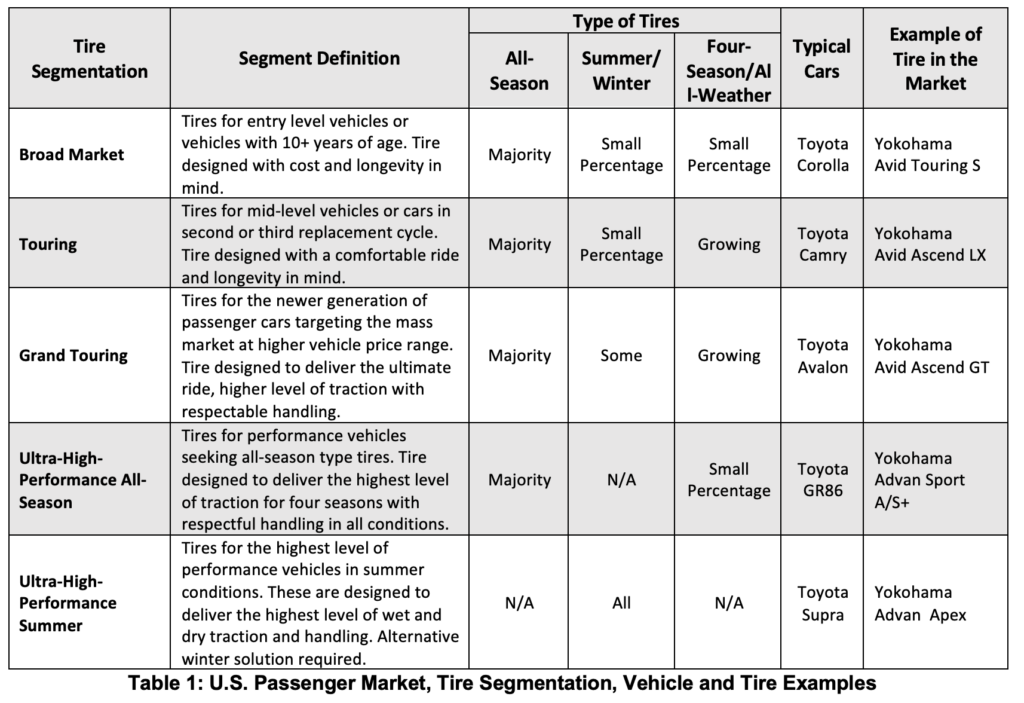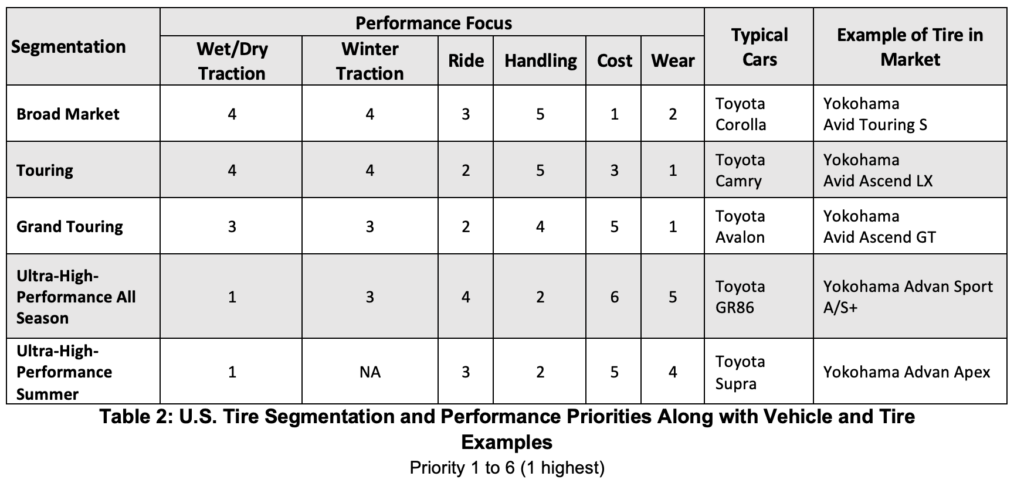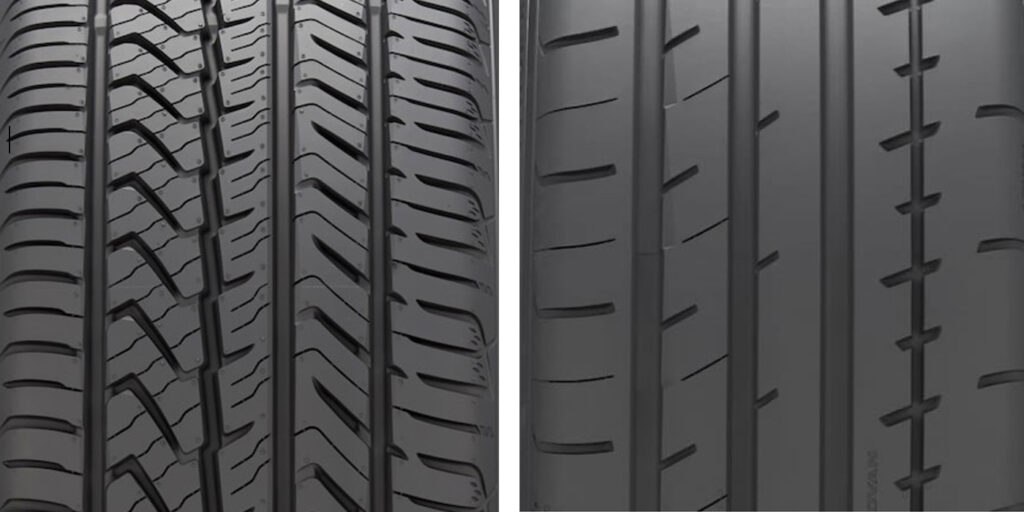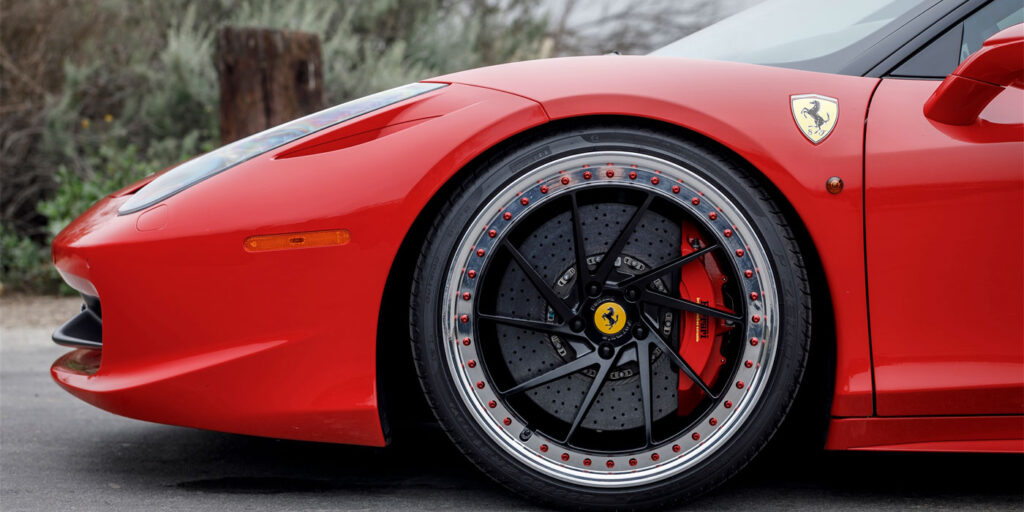The dream of going fast began soon after the invention of gasoline-fueled vehicles in 1880. The first true race was held in 1895 from Paris to Bordeaux and back with a distance of 1,178 km (732 mi.) and average speed of 24.15 kph (15 mph). In the same year, the first 54-mile race from Chicago to Evanston and back happened in the USA. With just six cars, only two eventually were able to finish the race with an average speed of 7 mph.
In short, the world of vehicles and their components has come a long way since 1895. The technology behind racing trickled down to street vehicles and their parts. Today, street cars can reach speeds north of 300 mph. As a result, vehicle components must be able to perform at such a demanding speed. Obviously, the only part interacting between the road and vehicle is the tire, so we in the tire industry like to think that is the most important component of any vehicle. Not only do tires need to carry the desired high speed, but they also require managing handling, endurance, ride, noise and traction in various temperature and weather conditions.
When we started the “Science Behind” series in Tire Review, we discussed speed capability and speed rating.
Briefly, speed ratings were established to match the speed capability of tires with the top speed of the vehicles to which they are applied. Speed rating does not suggest the speed of the vehicle and only shows the maximum capability of the tire. With the expectation of the letter H, letters go from A toward Z as the speed capability of the tire increases. Tires with the letter Y are capable of speeds up to 186 mph. Anything above 186 mph is indicated with a Y bracket “(Y)”. On most tires with speed symbols of Y and (Y), tire sizing normally changes from R to ZR indicating higher speed capability.
A world of trade-offs restricts tire engineers from developing all the performance aspects at the highest level into one tire. Like vehicles, tires are divided into different segments based on customer/vehicle requirements.
Here, we’ll review tire segmentation and its connection to vehicle segments. We’ll also examine performance requirements in each segment and the science behind developing an ultra-high performance (UHP) tire.
Passenger Tire Segmentations
Different customers have different needs. While some are looking to have fast cars with fast tires, others may want a comfortable ride or a low-cost daily driver with a lowest operating cost. Vehicle segmentation was created to develop vehicles based on specific customer needs at different price ranges. As a result, tires were categorized to match vehicle segmentations.
Table 1 shows tire segmentation, typical tire use in the segment and examples of cars and tires. Note that there is not a standard for naming vehicle and tire segments, and companies may have different ways of segmenting the market.

Table 2 looks at the performance priority of each segment. As shown, tire expectations between a touring tire and a UHP tire are completely different. A UHP tire focuses mainly on the performance aspect of traction/handling, while the touring tire focuses on ride and wear.

The Science Behind Designing a UHP Tire
UHP customers are demanding. They pay the premium price for their vehicles and expect the vehicle parts to perform at the highest level, including tires.
The performance expectation is generally categorized into two categories of basic and additional performance.
First off, tires need to meet the basic expectation. They need to fit into the wheel, fit into the car, stay on the wheel, carry the load, have durability and perform at a high-speed level without signs of deterioration or separation. Table 3 outlines the minimum basic tests and performance a tire should meet (this also depends on the tire company).
| Type of Test | Details |
| Tire Marking | DOT, ID (TIN), snowflake and any other markings |
| Tread Wear indicator | Number of indicators and location |
| Tire Dimension | Overall width, section width, outside diameter |
| Tire Bead Unseating Resistance | The amount of force required to unseat the bead |
| Tire Strength | Amount of energy required to break through the belt |
| Tire Endurance | To assure durability throughout the life of the tire |
| Low Inflation Pressure Performance | To assure tire performance at lower pressure |
| High-Speed Performance | To assure tire integrity at the required speed |
For a UHP tire to perform at all the basic tests, the following specific designs are often implemented:
- UHP tires often have a lower tread depth. While this is not ideal for tire longevity (wear) or snow performance, it helps the tire to perform at a higher speed by reducing heat buildup inside of the tire. In comparison to UHP summer tires, all-season tires have a deeper tread depth. This is due to their additional requirement of longer wear and performance in snow.
- UHP tires have softer/stickier compounds. This allows the tires to create maximum traction with the road. As UHP summer tires do not need to perform in snow, they run on a stickier/softer compound compared to all-season tires.
- UHP tires typically use rayon instead of polyester, in order to perform at higher speeds,. Rayon is a fabric made from purified cellulose fibers, which are typically created from wood pulp. The combination of properties such as high dimensional stability, good dynamic performance and very good thermal resistance makes it the best choice for use in the carcass of UHP tires.
Additional Performance
Once tires meet all required basic performance, it’s ready to hit the market, right? No. Tires need to perform on a lot more criteria than basic expectations. Table 4 shows the typical performance expectations of a UHP tire.
| Type of Test | Details |
| Wet Traction/Braking AND Dry Traction/Braking | Vehicle with ABS: braking is the important factor compared to traditional traction. Often braking correlates to vehicle safety |
| Snow Traction | Not applicable for UHP summer tires. Important performance on UHP all-season tires. |
| Ride/Comfort | Level of comfort for driver and passenger inside the vehicle |
| Handling | How well vehicle responds to driver steering input |
| Indoor/Outdoor Noise | Level of noise inside vehicle. Also, level of noise pollution |
| Rolling Resistance | Link to vehicle fuel efficiency |
| Wear | Tire longevity which links to the mileage warranty |
For a UHP tire to perform at the highest level, specific designs are often implemented. We talked about how UHP tires often have lower tread depth, which helps the tire to have better overall handling and dry stopping distance. Below are a few other additional performances that fine-tune a tire to fit the UHP summer category.
- UHP tires often use a very high level of silica in their tread compounds. Additional silica improves wet braking performance without a significant trade-off on wear. When it comes to rubber composition, a summer tire has a physical compound that is intended for temperatures generally above 40°F. Summer tires tend to have the stickiest compounds among the three tire types, giving them the most grip and best braking performance on wet/dry surfaces. But in colder temperatures, a summer tire’s compound may begin to harden and lose traction, increasing the risk of slipping or skidding on the road surface. The rubber composition of the all-season tire generally splits the difference between a winter tire and a summer tire, so it can remain relatively flexible in freezing temperatures and also provide the rigidity to be effective in warmer climates.
- For precise handling, the majority of UHP tires use a very small apex (bead reinforcement) along with a stronger sidewall. This will allow the tire and rim to act as one piece and provide precise handling for the car. Some OE tires use steel reinforcement in the lower part of the sidewall for additional handling performance.
- UHP summer tires use a much more rigid tread pattern compared to UHP all-season. This allows the UHP summer tires to achieve the highest level of dry braking for a passenger-type tire. As UHP all-season tires still need to perform in snowy conditions, their pattern still requires sipes. Picture 1 shows a typical UHP all-season and a typical summer tire.

The Evolution of UHP Summer Tires
While UHP tires are not new in the market, the technology has significantly improved. UHP all-season tires are a solid choice for the best UHP cars in the market. With advanced ABS systems, summer tires are able to deliver the shortest stopping distance generation after generation. How much more tire engineers can push the boundary is unknown, but this is not the last challenge in front of them. As the vehicle landscape changes, other new challenges will surface. One thing is for sure, tire engineers will always find a solution to move forward.














